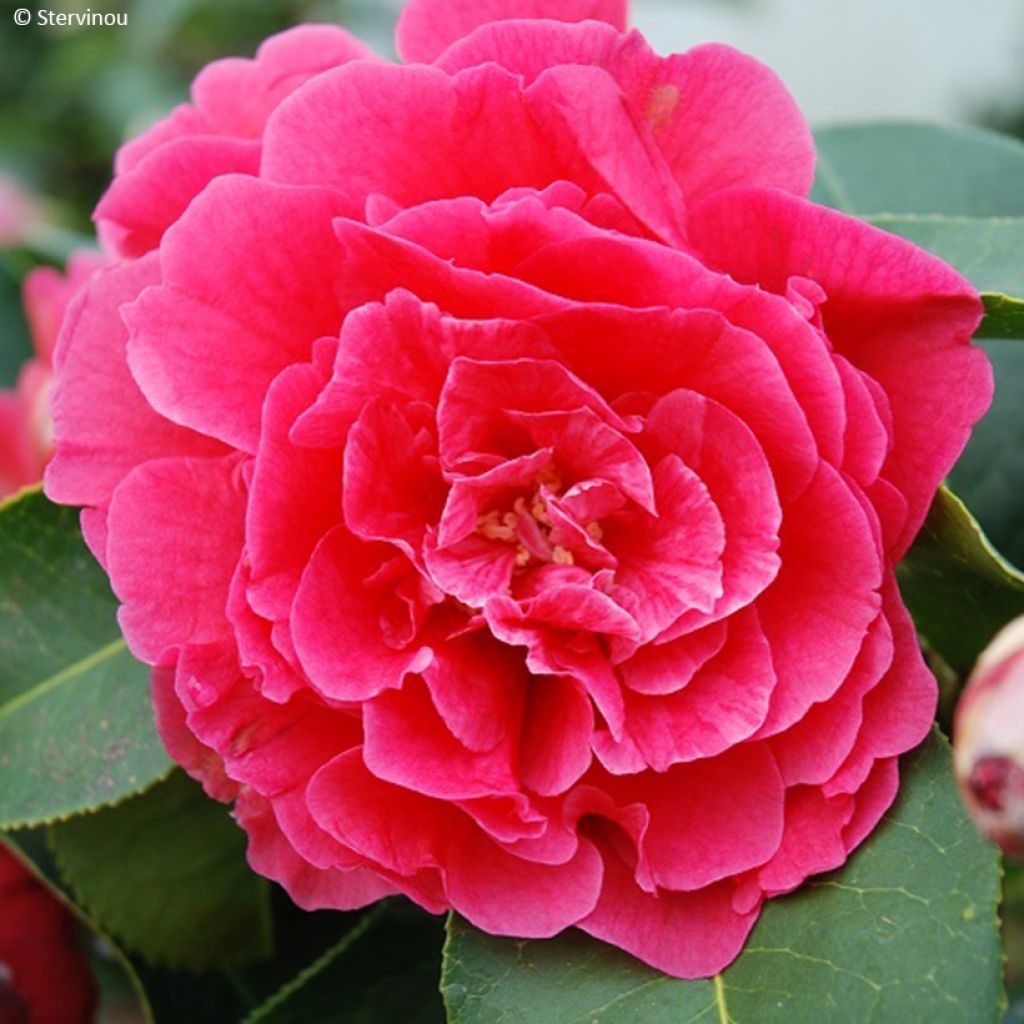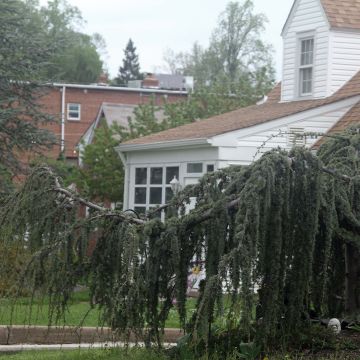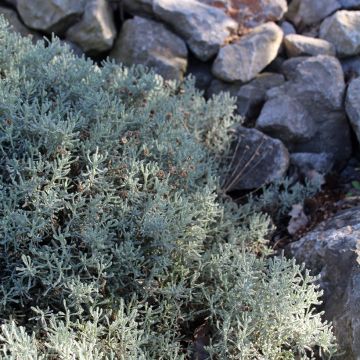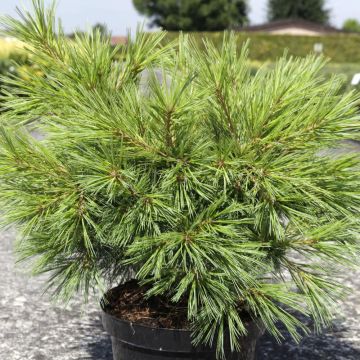

Camellia x reticulata Larry Piet
Camellia x reticulata Larry Piet
Camellia x reticulata Larry Piet
This item cannot be shipped to the selected country
Delivery charge from €5.90
More information
Schedule delivery date,
and select date in basket
This plant carries a 24 months recovery warranty
More information
We guarantee the quality of our plants for a full growing cycle, and will replace at our expense any plant that fails to recover under normal climatic and planting conditions.
From €5.90 for pickup delivery and €6.90 for home delivery
Express home delivery from €8.90.
Does this plant fit my garden?
Set up your Plantfit profile →
Description
The Camellia reticulata 'Larry Piet' captivates with its very large flowers that appear as early as February, attracting all eyes in the garden. This bush, which can reach 3 m in height, forms a beautiful clump of dark vegetation, against which the bright flowering stands out well. Measuring up to 15 cm in diameter, the flowers resembling roses or peonies are a vivid pink almost red. The bush then provides a magnificent spectacle at the end of winter and heralds spring in the most beautiful way. It should be planted sheltered from too strong sunlight, in fresh acidic soil to give the best of itself.
The Camellia is the most important genus in the small family of Theaceae, the best-known member of which is Camellia sinensis, used to produce tea by harvesting its young leaves. This restricted plant family hosts a few other little-known ornamental plants, but deserving of wider diffusion, such as Franklinia alatamaha or Stewartia. According to botanical classifications, Camellia comprises from a hundred to 250 natural species, originating from Asia. The number of horticultural varieties amounts to around 40,000, evidence of breeders' enthusiasm for this plant, which is truly revered in Japan.
While Camellia japonica is the flagship species of the genus and the most cultivated, Camellia reticulata is particularly interesting for its flowers, the largest in the genus. The botanical type species grows in the mountainous regions of southwest China (Yunnan province), where it can develop into true small trees reaching 10 m in height. Curiously, the wild form was only introduced to France in 1924, while cultivated varieties had been known for a century.
'Larry Piet' is a variety obtained in the United States by Meyer Piet, whose original seedling bloomed after 13 years in 1989. The breeder crossed a C. reticulata 'Pharaoh', a semi-double variety with pink-red petals playing against yellow stamens, and a C. reticulata 'Harold L. Paige', with double flowers of a bright red. The result of the cross is a perfect intermediate between the two parents. 'Larry Piet' forms a bush approximately 1.80 m high by 1.20 m wide after 10 years of cultivation, and will reach 3 m in height at maturity. It has a fairly upright habit, vigorous growth, and bears leaves 12 cm long and 5 cm wide. Their colour is a relatively dark green and, as is often the case with Camellias, their surface is glossy, slightly shiny. Evergreen, they serve as a backdrop to the flowering and are rather ornamental the rest of the year. From February, large cup-shaped flowers, 15 cm wide and 6.5 cm deep, bloom, reminiscent of roses or peonies. Semi-double to double, their numerous undulating petals almost entirely conceal the yellow stamens in the centre of the corolla. The flower colour is intermediate between the two parents, that is, a very deep pink approaching red. This vibrant colour is further enhanced by the dark background of the vegetation, and as the flowering season extends over several weeks, it accompanies the arrival of spring, bringing joy to the garden.
Camellia 'Larry Piet' is unmatched in brightening up the garden at the end of winter, even under the sometimes still grey sky. Its unusually large flowers create a visual focal point in the garden that enlivens any border. Forming a compact bush as wide as it is tall, the Daphne odora 'Marianni' with its superb green leaves broadly margined in yellow, will accompany your Camellia's flowering with its deliciously scented pink inflorescences that will perfume your border. In the background, plant a Rhododendron boddaertianum, whose clusters of white-pink flowers will take over from the two previous shrubs and delight your April. Accompany it with a Magnolia 'Megalonia' with giant deep pink flowers, the largest of which will reach 30 cm in diameter, and you will have created a scene of epic proportions to celebrate the end of winter and the start of the beautiful season!
Report an error about the product description
Plant habit
Flowering
Foliage
Botanical data
Camellia
x reticulata
Larry Piet
Theaceae
Cultivar or hybrid
Other Traditional Camellia
Planting and care
The Camellia 'Larry Piet' tolerates full sun in a favourable climate, such as in Atlantic regions; however, it is in partial shade, protected from the blazing sun and in a sheltered position from strong winds that it will give its best. Plant it in a fresh, humus-bearing, acidic, and well-drained soil. Do not plant the bush too deeply; the top of the root ball should be covered with 3 cm of soil. In winter, cover it with a 5 to 7 cm thick mulch composed of leaf compost and shredded bark. Beware of late frosts that can damage the flowers and buds. During dry periods, water the bush to prevent the dropping of flower buds. It is recommended to plant the camellia preferably in autumn to promote good rooting and better flowering from the first year. Possible diseases include chlorosis caused by excess limestone, brown spots caused by burns on leaves from south-facing exposure, sooty mould, scale insects, and vine weevils.
Pruning is not necessary; it should be done if needed just after flowering, before the emergence of new spring shoots, and sparingly. Most camellia hybrids do not recover from overly severe pruning.
Planting period
Intended location
Care
This item has not been reviewed yet - be the first to leave a review about it.
Evergreen shrubs
Haven't found what you were looking for?
Hardiness is the lowest winter temperature a plant can endure without suffering serious damage or even dying. However, hardiness is affected by location (a sheltered area, such as a patio), protection (winter cover) and soil type (hardiness is improved by well-drained soil).

Photo Sharing Terms & Conditions
In order to encourage gardeners to interact and share their experiences, Promesse de fleurs offers various media enabling content to be uploaded onto its Site - in particular via the ‘Photo sharing’ module.
The User agrees to refrain from:
- Posting any content that is illegal, prejudicial, insulting, racist, inciteful to hatred, revisionist, contrary to public decency, that infringes on privacy or on the privacy rights of third parties, in particular the publicity rights of persons and goods, intellectual property rights, or the right to privacy.
- Submitting content on behalf of a third party;
- Impersonate the identity of a third party and/or publish any personal information about a third party;
In general, the User undertakes to refrain from any unethical behaviour.
All Content (in particular text, comments, files, images, photos, videos, creative works, etc.), which may be subject to property or intellectual property rights, image or other private rights, shall remain the property of the User, subject to the limited rights granted by the terms of the licence granted by Promesse de fleurs as stated below. Users are at liberty to publish or not to publish such Content on the Site, notably via the ‘Photo Sharing’ facility, and accept that this Content shall be made public and freely accessible, notably on the Internet.
Users further acknowledge, undertake to have ,and guarantee that they hold all necessary rights and permissions to publish such material on the Site, in particular with regard to the legislation in force pertaining to any privacy, property, intellectual property, image, or contractual rights, or rights of any other nature. By publishing such Content on the Site, Users acknowledge accepting full liability as publishers of the Content within the meaning of the law, and grant Promesse de fleurs, free of charge, an inclusive, worldwide licence for the said Content for the entire duration of its publication, including all reproduction, representation, up/downloading, displaying, performing, transmission, and storage rights.
Users also grant permission for their name to be linked to the Content and accept that this link may not always be made available.
By engaging in posting material, Users consent to their Content becoming automatically accessible on the Internet, in particular on other sites and/or blogs and/or web pages of the Promesse de fleurs site, including in particular social pages and the Promesse de fleurs catalogue.
Users may secure the removal of entrusted content free of charge by issuing a simple request via our contact form.
The flowering period indicated on our website applies to countries and regions located in USDA zone 8 (France, the United Kingdom, Ireland, the Netherlands, etc.)
It will vary according to where you live:
- In zones 9 to 10 (Italy, Spain, Greece, etc.), flowering will occur about 2 to 4 weeks earlier.
- In zones 6 to 7 (Germany, Poland, Slovenia, and lower mountainous regions), flowering will be delayed by 2 to 3 weeks.
- In zone 5 (Central Europe, Scandinavia), blooming will be delayed by 3 to 5 weeks.
In temperate climates, pruning of spring-flowering shrubs (forsythia, spireas, etc.) should be done just after flowering.
Pruning of summer-flowering shrubs (Indian Lilac, Perovskia, etc.) can be done in winter or spring.
In cold regions as well as with frost-sensitive plants, avoid pruning too early when severe frosts may still occur.
The planting period indicated on our website applies to countries and regions located in USDA zone 8 (France, United Kingdom, Ireland, Netherlands).
It will vary according to where you live:
- In Mediterranean zones (Marseille, Madrid, Milan, etc.), autumn and winter are the best planting periods.
- In continental zones (Strasbourg, Munich, Vienna, etc.), delay planting by 2 to 3 weeks in spring and bring it forward by 2 to 4 weeks in autumn.
- In mountainous regions (the Alps, Pyrenees, Carpathians, etc.), it is best to plant in late spring (May-June) or late summer (August-September).
The harvesting period indicated on our website applies to countries and regions in USDA zone 8 (France, England, Ireland, the Netherlands).
In colder areas (Scandinavia, Poland, Austria...) fruit and vegetable harvests are likely to be delayed by 3-4 weeks.
In warmer areas (Italy, Spain, Greece, etc.), harvesting will probably take place earlier, depending on weather conditions.
The sowing periods indicated on our website apply to countries and regions within USDA Zone 8 (France, UK, Ireland, Netherlands).
In colder areas (Scandinavia, Poland, Austria...), delay any outdoor sowing by 3-4 weeks, or sow under glass.
In warmer climes (Italy, Spain, Greece, etc.), bring outdoor sowing forward by a few weeks.






















































